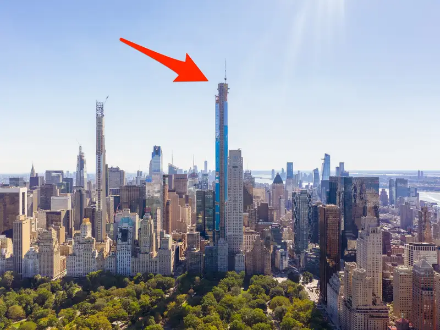Meet the Jetson ONE…
The company developed a proof of concept system in 2018 and has been developing what the company calls a ‘consumer friendly’ version of the Jetson ONE, with the intention of ‘making everyone a pilot,” a somewhat scary thought considering the lack of driving acumen seen on the roads today, but a noble idea from the standpoint of easing roadway congestion and reducing the use of fossil fuels. In that same vein, the company’s primary focus (other than selling aircraft) is safety and the aircraft features a triple redundant flight computer, has a ballistic parachute (a ballistic parachute is one that is made to open rapidly like an ejection seat), can fly with the loss of one (of eight) engines, has hands free hover and emergency functions, and has LIDAR based terrain tracking and obstacle avoidance features.
Of course there are a few questions one might ask before delving further into the purchase of the Jetson One, particularly cost and how difficult is it to get a license to fly one? Both questions are actually easy to answer. The cost to reserve a Jetson ONE is $22,000, with another $70,000 due on delivery, but don’t count on getting one this year as the company has sold out all chassis for 2022 and is now only taking orders for delivery in 2023, although actual 2022 deliveries will begin toward the end of 3Q or early 4Q. Current orders would start at #187, so there might be a bit of a wait.
The second question is a bit harder to answer, but for folks in the US the FAA says under Title 14 – Part 103 (Ultralight Vehicles) of the Code of Federal Regulations, you do not need to be a pilot to fly an ultra-light aircraft as long as it meets the following qualifications:
(a) Is used or intended to be used for manned operation in the air by a single occupant; (yes)
(b) Is used or intended to be used for recreation or sport purposes only; (no dogs, cats or other passengers)
(c) Does not have any U.S. or foreign airworthiness certificate; and
(d) If unpowered, weighs less than 155 pounds; or
(e) If powered:
(1) Weighs less than 254 pounds empty weight (yes) , excluding floats and safety devices which are intended for deployment in a potentially catastrophic situation;
(2) Has a fuel capacity not exceeding 5 U.S. gallons (no fuel other than batteries);
(3) Is not capable of more than 55 knots[1] (yes) calibrated airspeed at full power in level flight; and
(4) Has a power-off stall speed which does not exceed 24 knots calibrated airspeed (yes).
Since the Jetson ONE meets all of these requirements, it does not require the pilot to be licensed or carry a certificate of airworthiness, nor does it require the pilot to have any ‘aeronautical knowledge, age, experience or medical certificate’ to operate such a vehicle, although flight is limited to the hours between sunrise and sunset and flights over ‘congested areas’ is forbidden. We note that these rules are for the US only, with other countries defining ultra-lights differently, requiring permits, insurance and medical exams, including Canada, where an ultra-light pilot permit is required, so no flying over the border…
The company has received one outside investment from a former Google (GOOG) veteran and angel investor who is now an advisor to the company and is looking toward raising additional capital to fund the expansion Jetson needs to fill the over 186 Jetson ONE’s it sold since its release in October last year (12 to be delivered this year) and the 174 it has already sold for 2023. The launch video below has had over 14m views. The GIFs below are of the co-founder’s flight from his home in Tuscany to his office 3 miles away, and the 2nd of a typical landing. Please note we have no connection to the company, any involved personnel, funding sources, or have ever flown in an ultralight. We just thought it an interesting and unusual application of battery technology…
https://www.jetsonaero.com/static/jetson_one_background_desktop-ddb6a861fa42c1cc72e6f48d754cc9d7.mp4
https://img.etnews.com/news/article/2022/07/05/cms_temp_article_05163347350806.gif
https://img.etnews.com/news/article/2022/07/05/cms_temp_article_05163759593137.gif
Figure 1 - Aerial View of Seattle at 1,500 feet - Source: 123RF
Figure 2- The Jetsons (1962) - Source: Hanna-Barbera Productions
Figure 3 Central Park Tower - World's Tallest Residential Building - Source: Extel Development
[1] 55 knots = 63 mph






 RSS Feed
RSS Feed